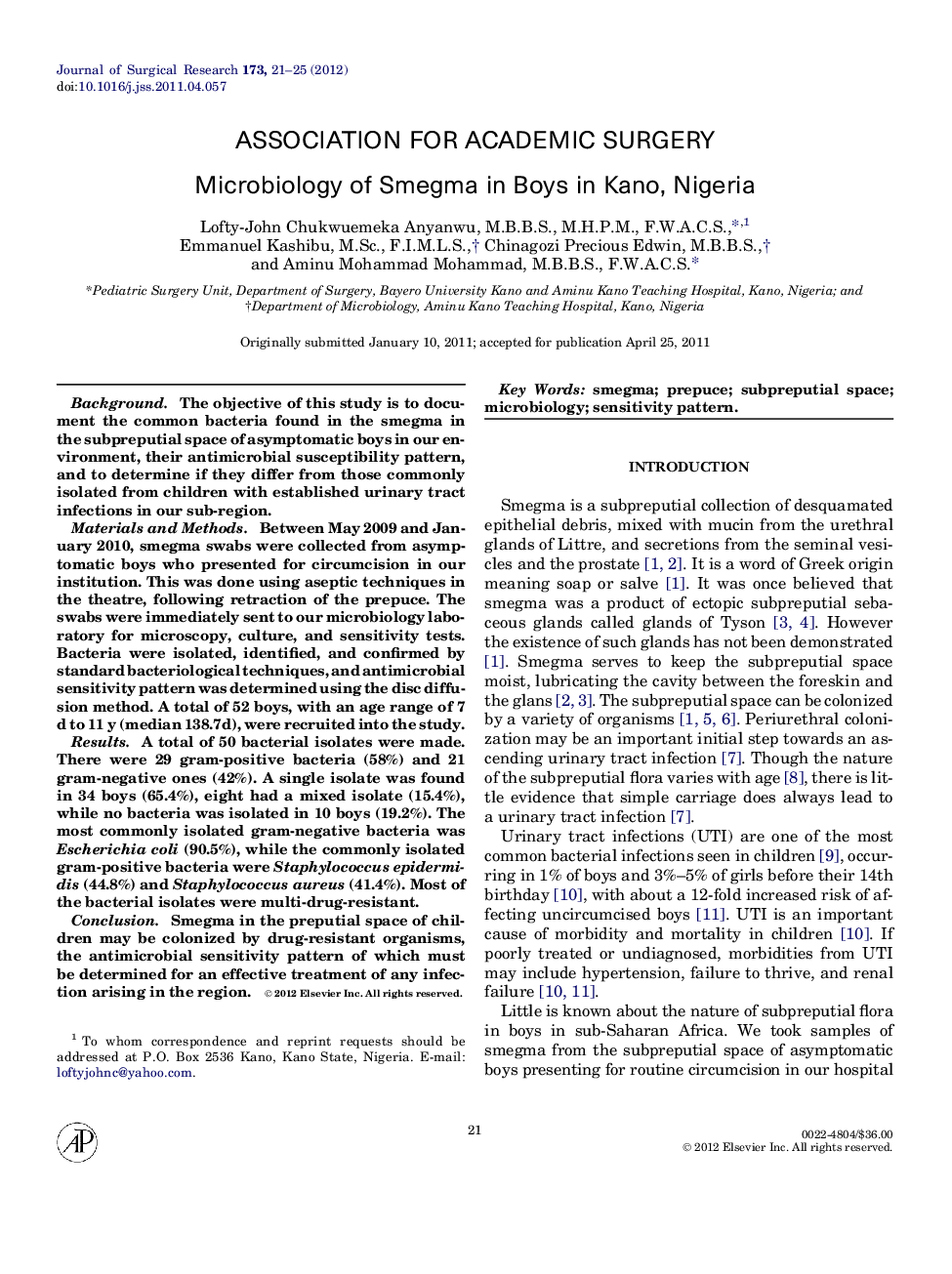| Article ID | Journal | Published Year | Pages | File Type |
|---|---|---|---|---|
| 4301525 | Journal of Surgical Research | 2012 | 5 Pages |
BackgroundThe objective of this study is to document the common bacteria found in the smegma in the subpreputial space of asymptomatic boys in our environment, their antimicrobial susceptibility pattern, and to determine if they differ from those commonly isolated from children with established urinary tract infections in our sub-region.Materials and MethodsBetween May 2009 and January 2010, smegma swabs were collected from asymptomatic boys who presented for circumcision in our institution. This was done using aseptic techniques in the theatre, following retraction of the prepuce. The swabs were immediately sent to our microbiology laboratory for microscopy, culture, and sensitivity tests. Bacteria were isolated, identified, and confirmed by standard bacteriological techniques, and antimicrobial sensitivity pattern was determined using the disc diffusion method. A total of 52 boys, with an age range of 7 d to 11 y (median 138.7d), were recruited into the study.ResultsA total of 50 bacterial isolates were made. There were 29 gram-positive bacteria (58%) and 21 gram-negative ones (42%). A single isolate was found in 34 boys (65.4%), eight had a mixed isolate (15.4%), while no bacteria was isolated in 10 boys (19.2%). The most commonly isolated gram-negative bacteria was Escherichia coli (90.5%), while the commonly isolated gram-positive bacteria were Staphylococcus epidermidis (44.8%) and Staphylococcus aureus (41.4%). Most of the bacterial isolates were multi-drug-resistant.ConclusionSmegma in the preputial space of children may be colonized by drug-resistant organisms, the antimicrobial sensitivity pattern of which must be determined for an effective treatment of any infection arising in the region.
